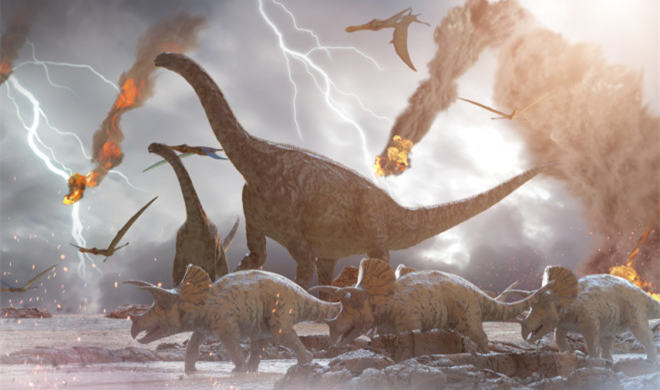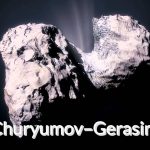Approximately 251 million years ago, around 90% of the species on Earth experienced a “mass extinction” event at the end of the Permian period. Today, researchers are warning that there are alarming signals of long-term human activity on Earth, with toxic algae and bacteria proliferating extensively. Algae and other microorganisms are rapidly covering freshwater systems, essentially suffocating all aquatic life beneath.
For a long time, there has been significant controversy in the international academic community regarding the causes of the Permian-Triassic extinction event (P-Tr). Scholars have proposed various hypotheses and explanations, including “celestial impacts,” “massive volcanic eruptions,” “rapid decomposition of underwater flammable ice,” and “oceanic oxygen depletion.” However, a unified understanding of the specific driving mechanisms and environmental factors has not yet been established.
Case Reenactment
Fossil records indicate that there have been five significant mass extinction events on Earth over the past 540 million years. Among them, the extinction event that occurred at the end of the Permian period is one of the most severe and largest-scale mass extinctions. “Its distinguishing features include a large scale, a short duration, and an extremely slow recovery of life systems after the extinction.”
It is reported that the Permian-Triassic extinction event resulted in the disappearance of over 80% of marine life, including corals, trilobites, and radiolarians. It also led to the extinction of over 75% of terrestrial life, including terrestrial synapsids and many reptilian groups. In terms of the scale of species extinction, it was even more severe than the dinosaur extinction event that occurred approximately 65 million years ago during the Cretaceous period. According to the latest age data, the Permian-Triassic extinction event, despite its immense scale, happened within a very short time frame, with numerous life forms seemingly “evaporating” in just around 100,000 years, leaving both land and sea in a state of desolation.
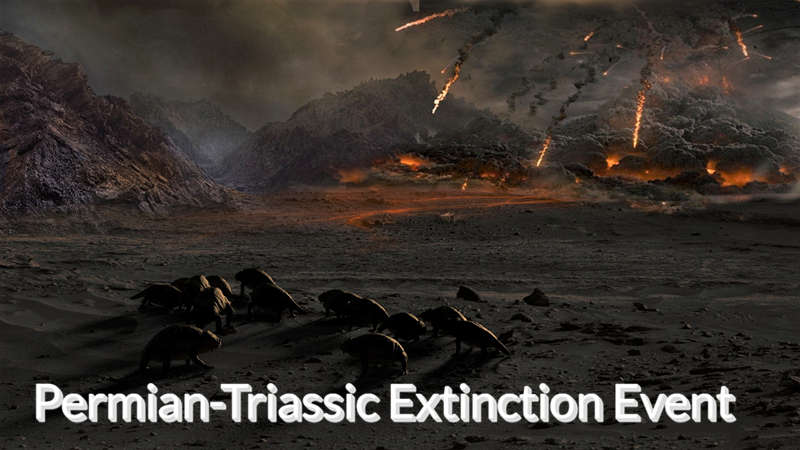
What’s even more crucial is that due to the severe damage inflicted on the life systems at the end of the Permian period, the complete recovery of life systems took approximately 5 million years, which is quite distinct from other extinction events.
Exploring the causes of this massive extinction event holds significant practical importance. “The study of the origin and evolution of life has always been a major scientific question in the natural sciences. Investigating the causes of the Permian-Triassic extinction event gives us a comprehensive understanding of the past evolution of life. Furthermore, it provides important insights for predicting future changes in Earth’s environment and life systems, bridging the past and present.” Below are 3 Possible Culprits about the Permian-Triassic Extinction Event.
1. The Villains Behind the Bad Temper – Volcanic Eruptions
Some researchers believe that volcanic eruptions were the true culprits behind the Permian-Triassic extinction event.
For example, a research group at the University of Calgary in Canada believes that the cause of this mass extinction event was the eruption of a massive volcano. They found abnormal mercury enrichment in the layers of volcanic ash in the Canadian Arctic dating back to 250 million years ago, which is strong evidence for explaining the cause of the Permian-Triassic extinction event. Abnormal mercury enrichment is typically associated with volcanic activity.
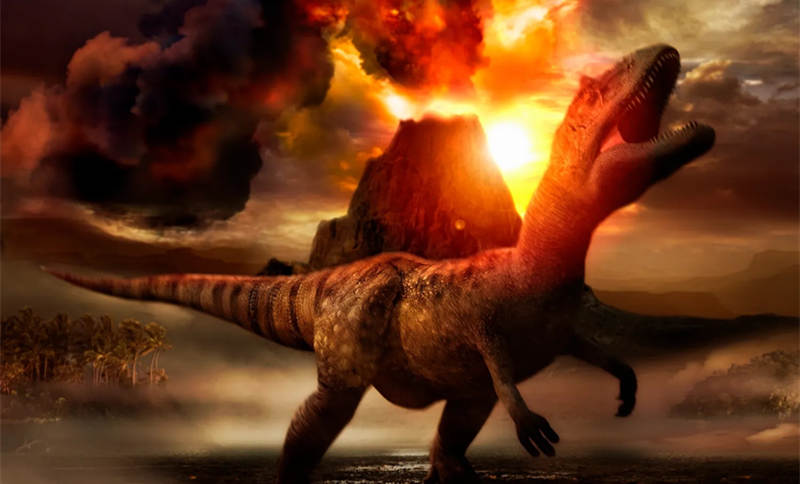
Their research indicates that the largest volcanic eruptions in the world reduced the oxygen content in the atmosphere, leading to the suffocation and death of numerous marine and terrestrial organisms. The massive deposits and greenhouse gases produced after the volcanic eruptions triggered acid rain and global warming, dealing a heavy blow to most species on Earth at the time.
Meanwhile, research by a team led by Professor Xie Shucheng at China University of Geosciences (Wuhan) also supports the connection between this mass extinction and volcanic eruptions. By collecting and analyzing biotic fossils dating back approximately 252 million years and the sediment layers that preserved them, researchers reconstructed the process of this mass extinction: volcanic eruptions in places like Siberia released large amounts of greenhouse gases and harmful gases such as carbon dioxide and sulfur dioxide. Coupled with other factors resulting from supercontinent aggregation, the Earth’s environment deteriorated, leading to global warming, oceanic oxygen depletion, and the mass extinction of numerous species.
2. The Double-Edged Assassin – Continental Weathering
The eruptions in the Siberian Large Igneous Province might have triggered the Permian-Triassic mass extinction, but massive volcanic eruptions only pulled the trigger. Continental weathering, on the other hand, accelerated the bullets aimed at life during the Permian period.
Since the Permian-Triassic extinction event caused extinctions in both terrestrial and marine life, understanding the relationship between changes in terrestrial and marine ecosystems and the mass extinction has been a significant scientific question. Continental weathering plays a pivotal role in connecting the land and marine ecosystems.
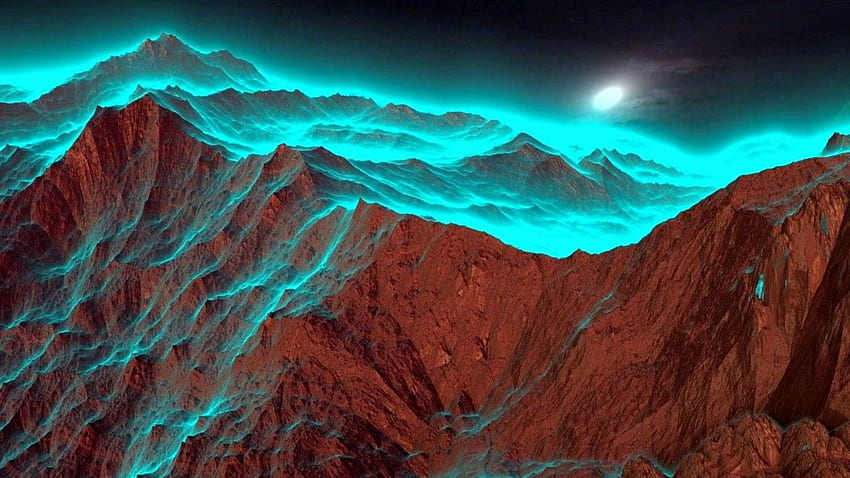
Weathering refers to the entire process by which hard rocks, minerals, and the atmosphere, water, and organisms in or near the Earth’s surface undergo physical and chemical changes, resulting in the formation of loose deposits in their original locations.
In the period just before the extinction event, there was a significant decrease in the lithium isotope composition of seawater. This feature persisted until the early Triassic, indicating a rapid increase in global continental weathering.
“The enhancement of continental weathering brings life nutrients like phosphorus, nitrogen, and silicon into the ocean, promoting primary productivity in the ocean and eutrophication. This process is similar to the eutrophication observed in modern coastal areas and lakes due to human activities. These biological and chemical processes, in turn, consume a large amount of oxygen in the ocean. Therefore, this is one of the important factors causing oceanic oxygen depletion, which can directly lead to the mass extinction of various marine organisms.”
3. The Deeply Hidden Spy – Submarine Methane Hydrates
Apart from the two aforementioned theories, some believe that the rapid decomposition of submarine methane hydrates was the “culprit” behind the Permian-Triassic mass extinction.
Submarine methane hydrates primarily refer to methane buried in seafloor sediments. Due to the immense pressure of seawater, they can stably exist at depths of 300 to 500 meters. However, if the pressure suddenly decreases, the buried methane in sediments will rapidly release into the ocean and the atmosphere, transforming into carbon dioxide within approximately 10 to 20 years. This leads to global warming and, consequently, the extinction of life.
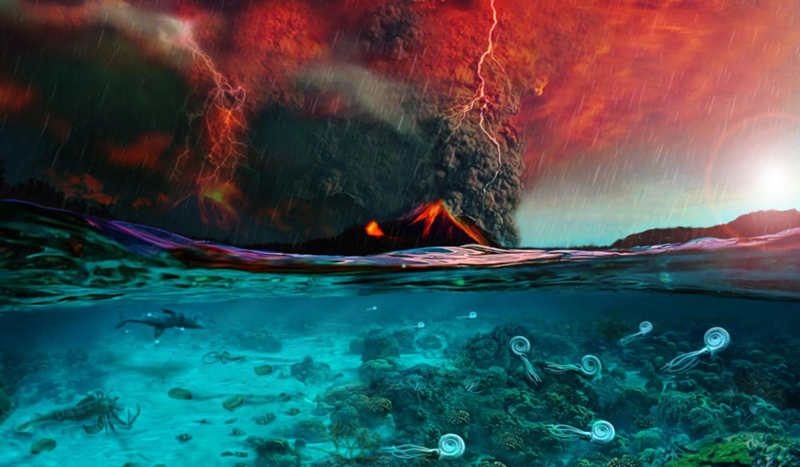
“At the end of the Permian period, the sudden drop in sea level was the primary geological factor triggering the rapid decomposition of methane hydrates. The widely accepted view is that the rapid decomposition of submarine methane hydrates was localized and might have been one of the factors in the Permian-Triassic mass extinction, but it was not the dominant factor.”
Furthermore, some suggest that “extraterrestrial visitors” played the role of “destroyers” in the Permian-Triassic mass extinction. Asteroids or comets violently impacted the Earth, generating strong shockwaves that instantly killed all life within thousands of square kilometers. However, to date, no conclusive geological evidence has been found to strongly support this theory.
Survivors Amidst the Catastrophe
The devastation wrought by the Permian-Triassic mass extinction event was catastrophic. However, even in such dire circumstances, a small number of terrestrial and marine species managed to survive.
“These species exhibited remarkable resilience and endurance,” said Shen Shuzhong from the Nanjing Institute of Geology and Palaeontology, Chinese Academy of Sciences. “For instance, there’s the marine organism known as ‘sea bean,’ which successfully endured. In appearance, it resembles a plumper version of a bean sprout and is the longest-lived brachiopod ever discovered, inhabiting temperate and tropical seas.”
There were more survivors among terrestrial organisms, as pointed out by Wang Jun, a paleobotanist at the Nanjing Institute of Geology and Palaeontology, Chinese Academy of Sciences. These survivors included ferns, cycads, horsetails, ginkgos, and conifers. “These survivors are categorized into broader groups, but only a few species from each of these major groups managed to persist,” such as the ancient ginkgo. The ginkgo trees from that time were quite distinct from their modern counterparts. “Their leaves had many more divisions, and the appearance of their leaves and hairs was quite different.”
“Although the Permian-Triassic mass extinction event was profoundly destructive, it also left behind vast ecological niches,” Shen Shuzhong noted. This provided opportunities for the subsequent development of terrestrial and marine life during the Triassic period and even for the emergence of Earth’s dominators – the dinosaurs.
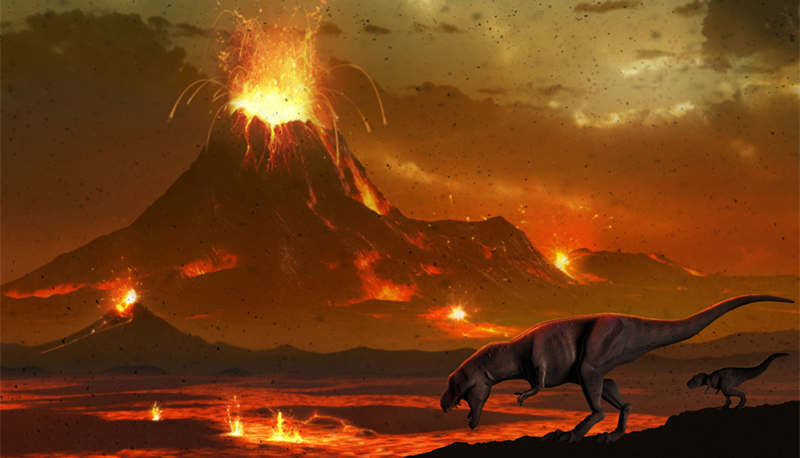
END
In conclusion, the various potential causes of the Permian-Triassic mass extinction event shed light on a profoundly significant and destructive episode in Earth’s history. These potential culprits include massive volcanic eruptions, continental weathering, and the rapid decomposition of submarine methane hydrates. While these factors each have their unique characteristics, they all had devastating impacts on the Earth’s ecosystem.
Nevertheless, despite the extensive losses brought about by the mass extinction event, some organisms displayed remarkable adaptability and survival skills, laying the groundwork for ecological recovery and future life evolution on Earth. The existence of survivors, such as sea beans and various terrestrial plants, provided opportunities for the restoration of ecosystems and the emergence of Earth’s dominators in the form of dinosaurs during the Triassic period.
This historical event not only enhances our understanding of Earth’s past but also serves as a reminder to protect and cherish biodiversity and to implement sustainable environmental conservation measures to ensure that our actions do not lead to future ecological crises. Ultimately, the study of the Permian-Triassic mass extinction event deepens our scientific knowledge and underscores the importance of continued efforts in preserving and sustainably developing Earth’s ecosystems.
More UFOs and mysterious files, please check out our YouTube channel: MysFiles
Mysterious Stone Spheres around the world – Costa Rica, European forest, Russia, Kazakhstan
